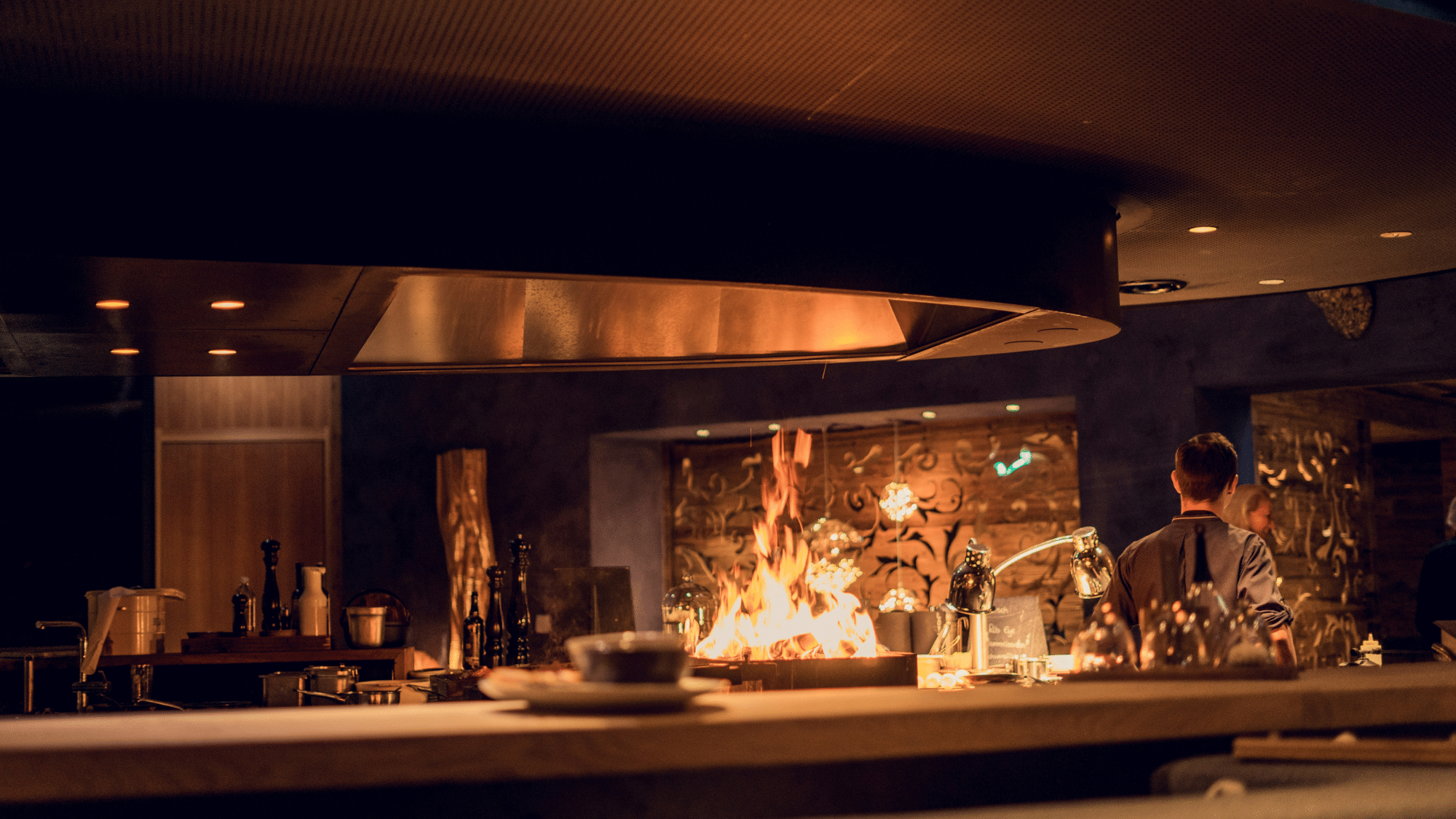The restaurant industry is undergoing a significant transformation. This digital restaurant revolution is being fueled by new technologies that are reshaping how restaurants operate, serve customers, and stay competitive. Whether you’re a restaurant owner or a tech enthusiast, understanding these trends is crucial for keeping up with the evolving landscape.
Enhancing Online Ordering

Online ordering systems have become a cornerstone of the modern dining experience. These systems allow customers to place orders from the comfort of their homes or while on the go, streamlining the ordering process and reducing wait times.
Benefits of Online Ordering
- Convenience: Customers can easily browse menus and place orders without needing to call the restaurant.
- Increased Accuracy: Orders are recorded digitally, reducing the chance of errors.
- Higher Sales: Restaurants often see increased sales as customers find it easier to order additional items.
By integrating an efficient online ordering system, restaurants can significantly enhance customer satisfaction and boost their bottom line.
Embracing Digital Payments
The adoption of digital payment solutions is another crucial trend in the restaurant industry. These systems allow customers to pay for their meals using a variety of methods, including mobile wallets, and contactless cards.
Advantages of Digital Payments
- Speed: Transactions are faster, reducing wait times for customers.
- Security: Enhanced security features protect against fraud and theft.
- Convenience: Customers can choose their preferred payment method, improving the overall dining experience.
Digital payment solutions are not just about convenience; they are a key component of the broader digital restaurant revolution.
Developing Delivery Apps

With the rise of online food delivery, creating a food delivery app has become a critical move for many restaurants. These apps allow restaurants to reach a wider audience and provide a convenient way for customers to enjoy their favorite meals at home.
Steps to Developing a Delivery App
- Identify Key Features: Include functionalities like order tracking, multiple payment options, and customer reviews.
- Choose a Development Platform: Select a platform that supports the desired features and scalability.
- Design User Interface: Focus on a user-friendly and intuitive design to enhance the customer experience.
By developing a dedicated food delivery app, restaurants can tap into the growing demand for convenient dining options and expand their market reach.
Building an Online Presence
A strong online presence is essential for modern restaurants, and a restaurant website maker can simplify the process of creating a professional and attractive website. These tools offer various templates for restaurant websites that can be customized to reflect the unique branding and style of each establishment.
Key Features of a Good Website
- Easy Navigation: Ensure that the website is easy to navigate, with clear menus and contact information.
- Mobile Responsiveness: The website should be optimized for mobile devices to cater to on-the-go customers.
- Integration with Ordering: Incorporate an online ordering system directly into the website for seamless customer experience.
Using a restaurant website maker and templates for restaurant websites, restaurateurs can quickly establish an effective online presence that attracts and engages customers.
Introducing Smart Kitchens

Smart kitchen technologies are revolutionizing restaurant management by automating various cooking and food preparation processes. These technologies help improve efficiency, reduce waste, and enhance food quality.
Examples of Smart Kitchen Technologies
- Automated Cooking Equipment: Devices that can cook food to precise specifications with minimal human intervention.
- Inventory Management Systems: Tools that track inventory levels and automatically reorder supplies as needed.
- Energy-Efficient Appliances: Equipment that uses less energy, reducing operating costs and environmental impact.
By incorporating smart kitchen technologies, restaurants can streamline their operations and focus on delivering high-quality dining experiences.
Utilizing CRM Systems
CRM systems are becoming increasingly important for restaurants looking to build strong relationships with their customers. These systems help manage customer data, track preferences, and create personalized marketing campaigns.
Benefits of CRM Systems
- Personalized Service: Use customer data to tailor dining experiences to individual preferences.
- Targeted Marketing: Create targeted campaigns based on customer behavior and preferences.
- Improved Customer Loyalty: By understanding customer needs better, restaurants can foster loyalty and repeat business.
A robust CRM system can help restaurants improve customer satisfaction and retention, ultimately driving growth and stability.
Exploring AR and VR
AR and VR technologies are opening new possibilities for enhancing the dining experience. These technologies can be used for everything from interactive menus to virtual restaurant tours, providing unique and engaging experiences for customers.
Uses of AR and VR in Restaurants
- Interactive Menus: Allow customers to view 3D representations of dishes before ordering.
- Virtual Tours: Give potential customers a virtual tour of the restaurant, showcasing the ambiance and layout.
- Entertainment: Provide immersive experiences that entertain and engage diners.
By leveraging AR and VR, restaurants can create memorable experiences that set them apart from the competition.
Leveraging AI
Artificial intelligence (AI) is playing an increasingly significant role in restaurant management. AI technologies are being used to optimize operations, enhance customer service, and even predict trends in dining preferences.
Applications of AI in Restaurants
- Predictive Analytics: Analyze data to forecast customer demand and optimize menu offerings.
- Chatbots: Use AI-powered chatbots for customer service, taking reservations, and answering common questions.
- Automated Marketing: Implement AI-driven marketing tools to create personalized campaigns that increase customer engagement.
Technology is changing restaurant management in profound ways, and AI is at the forefront of this transformation.
Final Remarks
The restaurant industry is evolving rapidly, with technology playing a pivotal role in driving these changes. From online ordering systems to smart kitchen technologies and AI, the digital restaurant revolution is here to stay. By embracing these eight must-know tech trends, restaurants can enhance their operations, improve customer satisfaction, and stay competitive in a dynamic market.
Published by: Martin De Juan

















